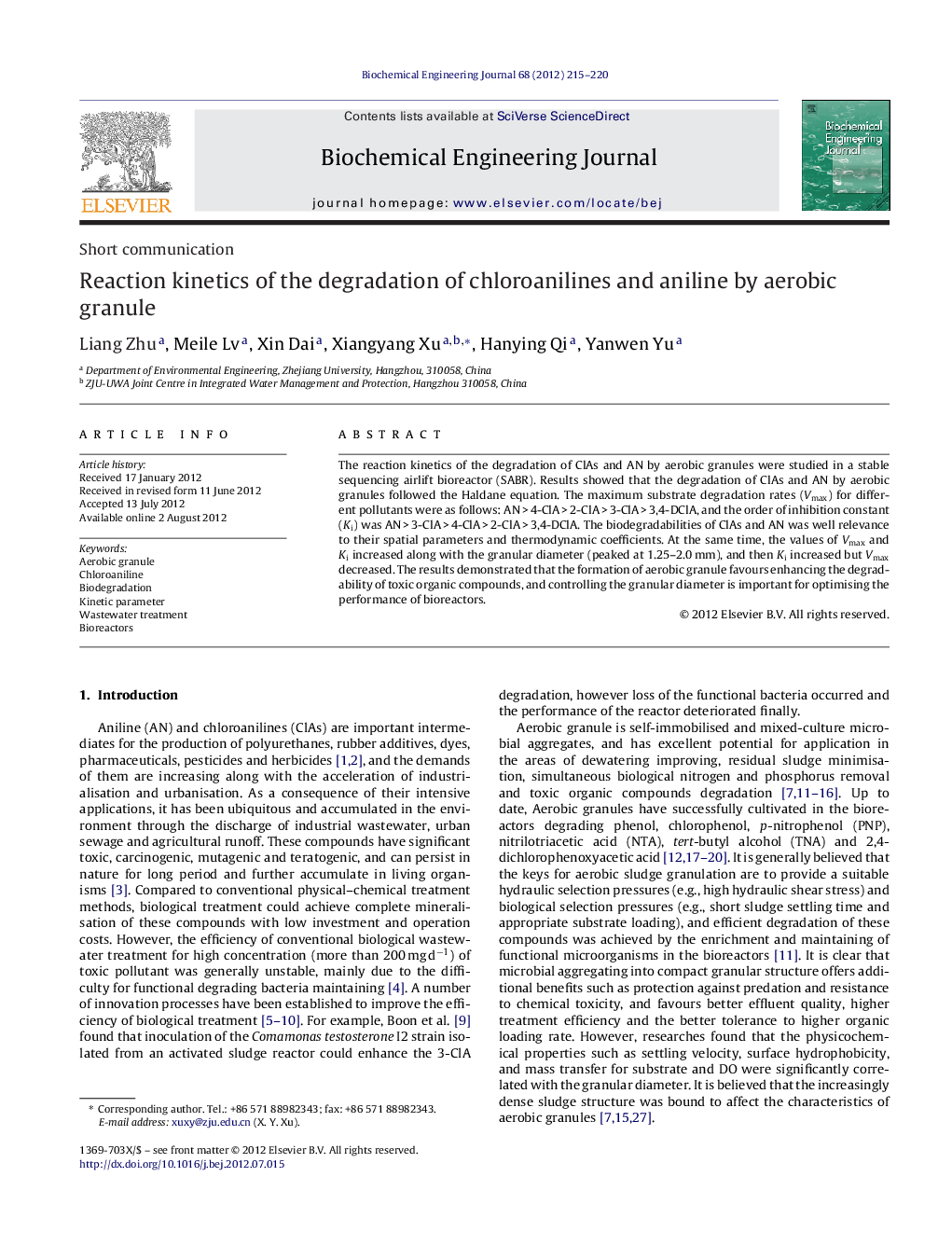| Article ID | Journal | Published Year | Pages | File Type |
|---|---|---|---|---|
| 3491 | Biochemical Engineering Journal | 2012 | 6 Pages |
The reaction kinetics of the degradation of ClAs and AN by aerobic granules were studied in a stable sequencing airlift bioreactor (SABR). Results showed that the degradation of ClAs and AN by aerobic granules followed the Haldane equation. The maximum substrate degradation rates (Vmax) for different pollutants were as follows: AN > 4-ClA > 2-ClA > 3-ClA > 3,4-DClA, and the order of inhibition constant (Ki) was AN > 3-ClA > 4-ClA > 2-ClA > 3,4-DClA. The biodegradabilities of ClAs and AN was well relevance to their spatial parameters and thermodynamic coefficients. At the same time, the values of Vmax and Ki increased along with the granular diameter (peaked at 1.25–2.0 mm), and then Ki increased but Vmax decreased. The results demonstrated that the formation of aerobic granule favours enhancing the degradability of toxic organic compounds, and controlling the granular diameter is important for optimising the performance of bioreactors.
► Reaction kinetics of aniline and chloroanilines by aerobic granules are studied in this paper. ► Formation of aerobic granule favours enhancing the degradability of toxic organic compounds. ► Controlling granular diameter is important for optimising the performance of bioreactor.
